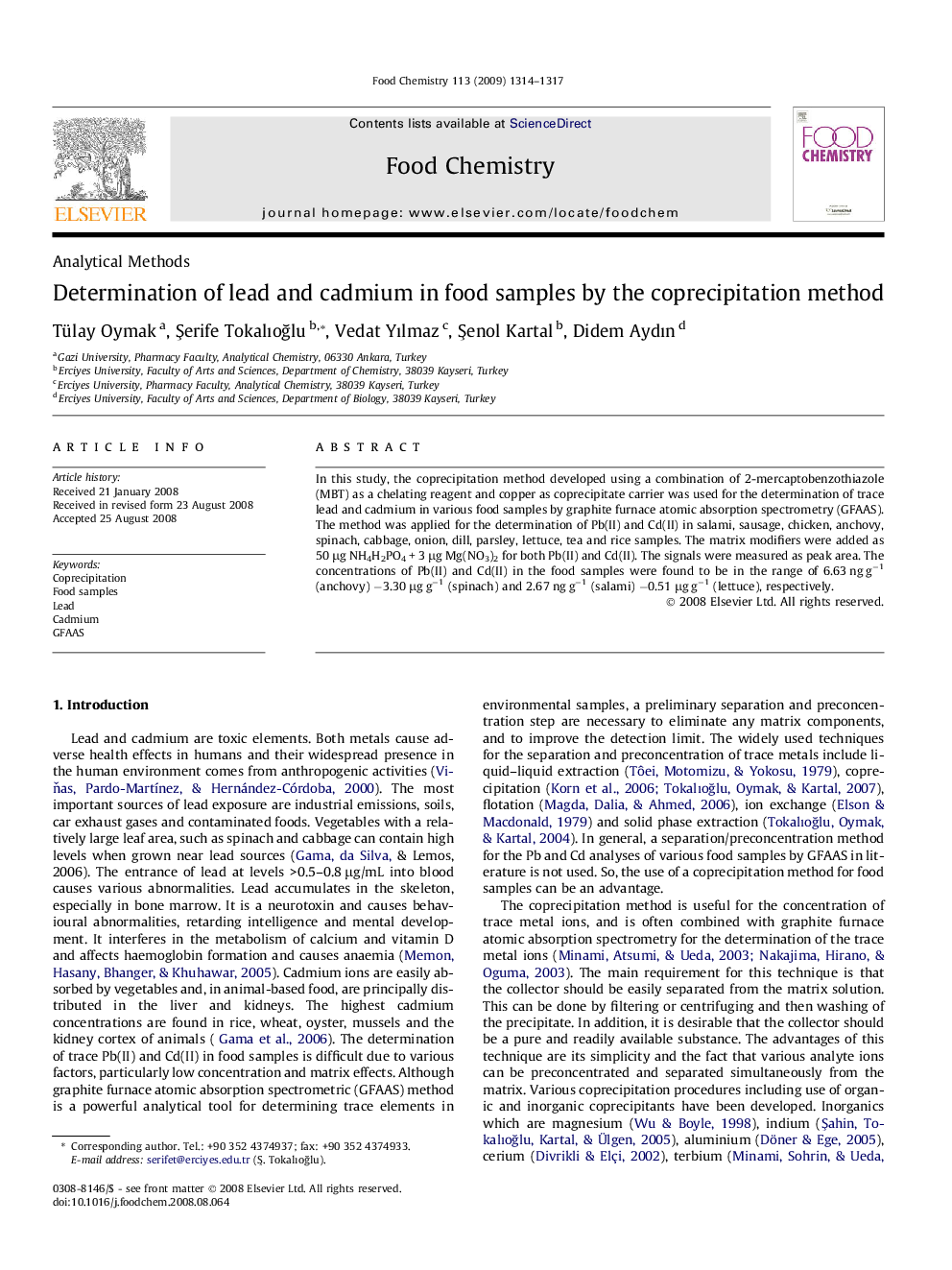| Article ID | Journal | Published Year | Pages | File Type |
|---|---|---|---|---|
| 1189003 | Food Chemistry | 2009 | 4 Pages |
In this study, the coprecipitation method developed using a combination of 2-mercaptobenzothiazole (MBT) as a chelating reagent and copper as coprecipitate carrier was used for the determination of trace lead and cadmium in various food samples by graphite furnace atomic absorption spectrometry (GFAAS). The method was applied for the determination of Pb(II) and Cd(II) in salami, sausage, chicken, anchovy, spinach, cabbage, onion, dill, parsley, lettuce, tea and rice samples. The matrix modifiers were added as 50 μg NH4H2PO4 + 3 μg Mg(NO3)2 for both Pb(II) and Cd(II). The signals were measured as peak area. The concentrations of Pb(II) and Cd(II) in the food samples were found to be in the range of 6.63 ng g−1 (anchovy) −3.30 μg g−1 (spinach) and 2.67 ng g−1 (salami) −0.51 μg g−1 (lettuce), respectively.
